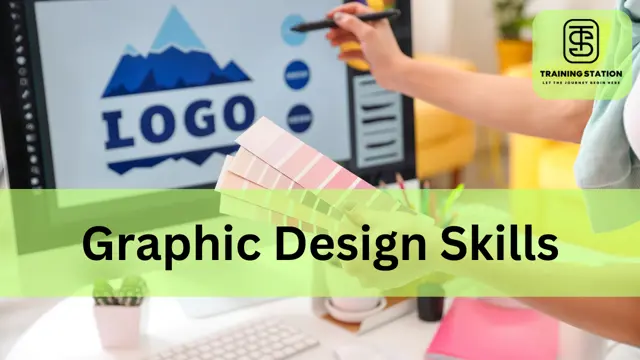Graphic design plays a crucial role in today’s world, where visual communication has become paramount. With the rise of social media platforms, websites, and digital marketing campaigns, businesses are constantly looking for ways to grab the audience’s attention and leave a lasting impression. This is where graphic design comes in. It helps companies effectively convey their brand message through visually appealing graphics, such as logos, advertisements, or illustrations. In an age where consumers have shorter attention spans and are bombarded with information from all sides, it is imperative for businesses to invest in high-quality graphic design to stand out from the crowd.
Furthermore, graphic design goes beyond just aesthetics; it has become an essential component of user experience (UX) design. UX designers aim to create smooth and enjoyable interactions between users and digital products or services. Graphic designers contribute to this process by designing user-friendly interfaces that prioritise functionality while maintaining visual appeal. From intuitive navigation menus to eye-catching buttons, every element designed by a graphic designer contributes towards enhancing the overall user experience.
However, it’s not just businesses that benefit from graphic design – individuals also rely on it daily. From reading newspapers with engaging infographics to using mobile apps with well-designed interfaces, we encounter graphic design everywhere in our daily lives. Even personal projects like creating invitations or designing a resume can greatly benefit from basic graphic design skills.
In conclusion
With technology rapidly advancing and visual content becoming increasingly prevalent across various industries, the demand for skilled graphic designers continues to grow steadily.
See also Laser Marking Solutions: Precision, Versatility, And Permanence
Technical skills: Adobe Creative Suite, coding basics
One of the most important technical skills for a graphic designer is proficiency in the Adobe Creative Suite. This software package encompasses popular programs such as Photoshop, Illustrator, and InDesign, which are essential tools for creating visually appealing designs. Understanding how to navigate these programs and utilise their various features effectively can significantly enhance a designer’s ability to bring their creative vision to life.
In addition to mastering the Adobe Creative Suite, having a basic understanding of coding can also be extremely beneficial for graphic designers. While coding may not seem like an obvious skill requirement for this field, it has become increasingly relevant as websites and digital media play a significant role in modern design. Having knowledge of HTML and CSS allows designers to collaborate more effectively with web developers and communicate with clients regarding design implementation on various platforms.
Overall, possessing technical skills in Adobe Creative Suite and coding basics is crucial for graphic designers in today’s digital age. These skills empower them to create aesthetically pleasing visuals while also being able to adapt their designs easily across different mediums – whether it be print materials or online platforms. By staying up-to-date with technological advancements within the industry, designers can position themselves as versatile professionals who are equipped to meet the evolving demands of clients and employers alike.
Creativity and visual storytelling
Creativity and visual storytelling are two crucial skills for a graphic designer. In today’s world, where attention spans are short and competition is fierce, it is essential to captivate your audience at first glance. Being able to use creative thinking to tell a story visually can help designers stand out in a crowded market.
Visual storytelling goes beyond just creating aesthetically pleasing designs; it involves conveying a message or evoking emotions through images and visuals. By leveraging their creativity, designers can develop unique concepts that communicate ideas effectively and leave a lasting impact on viewers. Whether it’s through illustrations, infographics, or animations, the ability to tell stories visually allows designers to engage with their audience on a deeper level.
Moreover, creativity plays an important role in problem-solving for graphic designers. It enables them to think outside the box when faced with design challenges and find innovative solutions that set their work apart from others. Creativity helps generate fresh ideas and pushes boundaries in design, helping designers create visually compelling content that grabs attention in today’s oversaturated media landscape.
By honing their skills in creativity and visual storytelling, graphic designers can not only meet but exceed client expectations. They bring much-needed innovation to projects while effectively communicating messages through visuals that leave lasting impressions on viewers’ minds. As the demand for standout designs continues to rise, building these skills will ensure that graphic designers remain at the forefront of their profession.
See also Discover The World Of Art Prints For Sale
Communication and Collaboration
Communication and collaboration are two of the most crucial skills for a graphic designer. In this digital era, designers need to effectively communicate their ideas and concepts to clients, team members, and stakeholders. Clear communication helps ensure that everyone is on the same page and reduces the chances of misinterpretation or misunderstanding.
Collaboration is equally vital as it allows graphic designers to work seamlessly with others, such as copywriters, web developers, and marketers. By collaborating closely with these professionals, designers can create impactful designs that not only look visually appealing but also align with the client’s goals and target audience. Collaboration also opens up opportunities for creative brainstorming sessions where different perspectives can be shared and valuable insights gained.
Both communication and collaboration skills are essential components of successful project management in graphic design. These skills enable designers to effectively convey their ideas, gather feedback from others, solve problems collectively, and meet deadlines efficiently. Moreover, effective communication fosters trust among team members, while collaboration encourages a sense of camaraderie and unity within the creative process.
In conclusion, strong communication skills allow graphic designers to clearly articulate their visions while collaboration ensures that these visions become a reality through teamwork. As the demand for graphic designers continues to grow in today’s fast-paced digital landscape, honing these skills becomes increasingly critical for success in this field. So whether you’re an aspiring designer or someone already working in the industry, investing time in improving your communication and collaboration abilities will undoubtedly contribute to your professional growth as a versatile graphic designer.
Time management and organisation
Time management and organisation are essential skills for any graphic designer. With multiple projects, deadlines, and client demands, it is crucial to effectively manage your time to deliver high-quality work on schedule. Being organised allows you to stay on top of your tasks and priorities, ensuring nothing falls through the cracks.
One way to improve time management is by developing a system that works for you. Whether it’s using project management software, creating a detailed schedule, or employing a combination of tools, finding a method that helps you stay organised can significantly enhance your productivity. Additionally, setting realistic goals and breaking Dividing larger undertakings into smaller jobs might help them become less intimidating and more achievable.
Beyond project-specific tasks, another important aspect of time management is allocating time for personal growth and creative exploration. As a graphic designer, staying up-to-date with the latest design trends and techniques is vital. By dedicating regular time slots to research industry developments or experimenting with new design tools or styles, you can continuously refine your skills and keep yourself ahead in the competitive world of graphic design.
In conclusion, mastering time management and organisation enhances not only your productivity but also your creativity as a graphic designer. Developing effective systems tailored to your needs enables you to stay focused on delivering exceptional work while still allowing room for personal growth within the field of design. So embrace these skills as essential tools in achieving success in your career as a graphic designer.
See also Classifications of degrees in Germany’s Education system
Business acumen and client management
Business acumen and client management are two crucial skills for graphic designers that can greatly impact their success in the industry. While technical expertise and creativity are important, without strong business acumen, graphic designer may struggle to understand the needs of their clients and deliver work that aligns with their objectives. Understanding the business side of design allows a graphic designer to approach projects strategically, considering factors such as target audience, market trends, and brand positioning.
Additionally, client management is essential for establishing long-term relationships and securing repeat business. Effective communication with clients is key to understanding their vision and ensuring that expectations are met. A skilled graphic designer will not only create visually appealing designs but also actively listen to client feedback, provide clear explanations for design decisions, and be receptive to constructive criticism. By cultivating good client-management practices, designers can build trust and credibility with their clients.
In today’s competitive market for graphic design services, having a deep understanding of business operations along with the ability to effectively manage clients sets apart truly successful professionals from the rest. Being able to speak the language of businesses and manage relationships with clients ensures that graphic designers have a holistic approach towards their work – delivering designs that not only capture attention but also contribute measurably towards achieving organisational goals. So it’s clear: honing one’s business acumen and mastering skilful client management is paramount for any aspiring or established graphic designer aiming to make an impactful mark in this industry.
See also Take Control Of Your Future And Run A Home Business!
Conclusion: The evolving role of graphic designers
In conclusion, the role of graphic designers is in a constant state of evolution. As technology continues to advance and influence the way we communicate, graphic designers have to adapt their skills and stay up-to-date with new tools and techniques. While traditional design skills like typography and colour theory remain essential, graphic designers now need to also possess technical skills such as coding or video editing.
Furthermore, the demand for graphic designers is only set to increase as businesses recognize the importance of visually appealing content in today’s digital world. With the rise of social media platforms and online advertising, companies are constantly seeking creative individuals who can captivate audiences through visual storytelling. However, it is important for graphic designers to not only focus on aesthetics but also understand user experience and how design can enhance functionality.
Overall, graphic designers play an integral role in shaping our visual landscape. Their ability to combine creativity with technical expertise makes them vital assets in various industries. As technology continues to evolve, so will the role of graphic designers, presenting exciting opportunities for those willing to embrace change and continue sharpening their skills.




